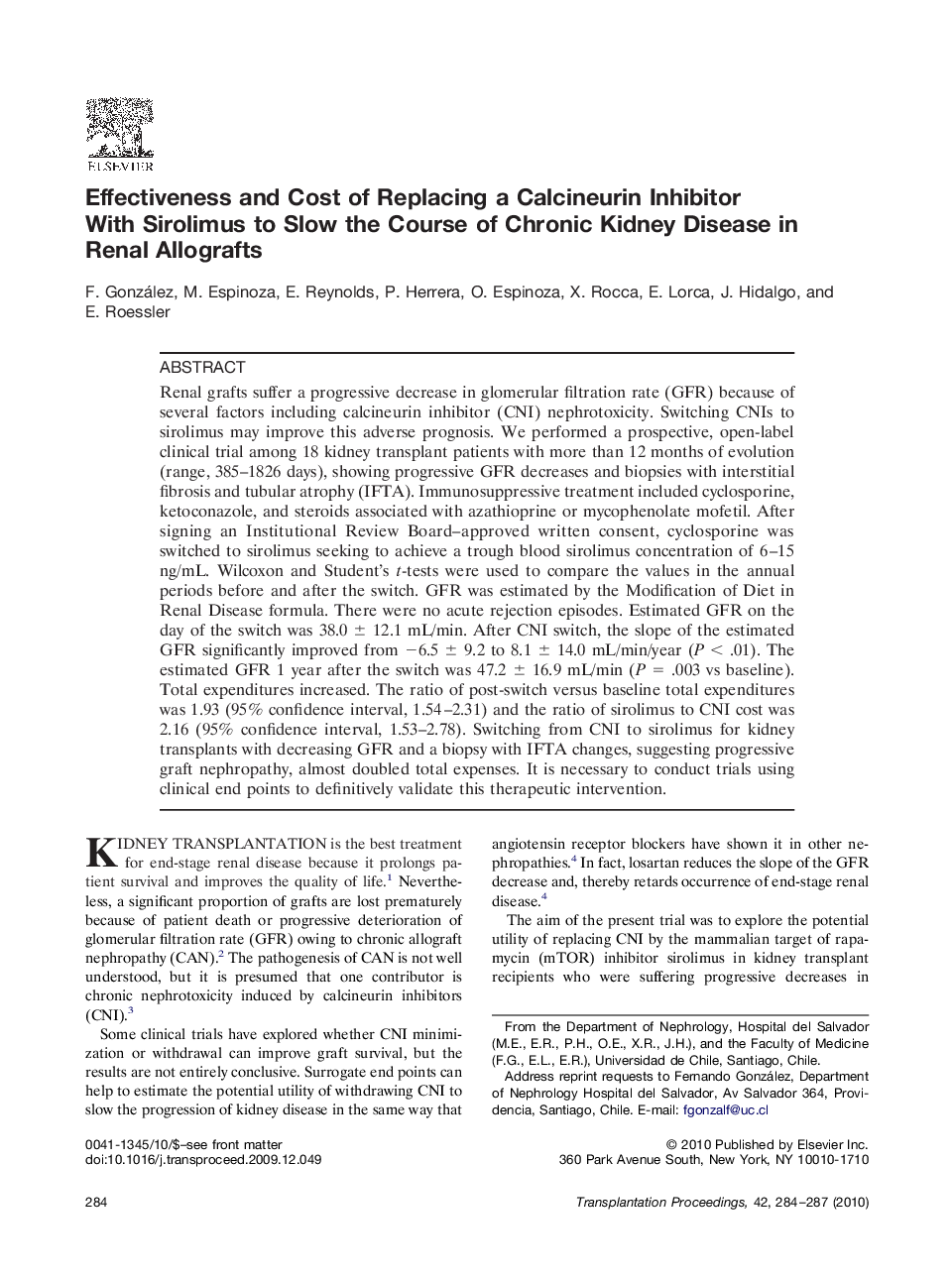| Article ID | Journal | Published Year | Pages | File Type |
|---|---|---|---|---|
| 4260871 | Transplantation Proceedings | 2010 | 4 Pages |
Renal grafts suffer a progressive decrease in glomerular filtration rate (GFR) because of several factors including calcineurin inhibitor (CNI) nephrotoxicity. Switching CNIs to sirolimus may improve this adverse prognosis. We performed a prospective, open-label clinical trial among 18 kidney transplant patients with more than 12 months of evolution (range, 385–1826 days), showing progressive GFR decreases and biopsies with interstitial fibrosis and tubular atrophy (IFTA). Immunosuppressive treatment included cyclosporine, ketoconazole, and steroids associated with azathioprine or mycophenolate mofetil. After signing an Institutional Review Board–approved written consent, cyclosporine was switched to sirolimus seeking to achieve a trough blood sirolimus concentration of 6–15 ng/mL. Wilcoxon and Student's t-tests were used to compare the values in the annual periods before and after the switch. GFR was estimated by the Modification of Diet in Renal Disease formula. There were no acute rejection episodes. Estimated GFR on the day of the switch was 38.0 ± 12.1 mL/min. After CNI switch, the slope of the estimated GFR significantly improved from −6.5 ± 9.2 to 8.1 ± 14.0 mL/min/year (P < .01). The estimated GFR 1 year after the switch was 47.2 ± 16.9 mL/min (P = .003 vs baseline). Total expenditures increased. The ratio of post-switch versus baseline total expenditures was 1.93 (95% confidence interval, 1.54–2.31) and the ratio of sirolimus to CNI cost was 2.16 (95% confidence interval, 1.53–2.78). Switching from CNI to sirolimus for kidney transplants with decreasing GFR and a biopsy with IFTA changes, suggesting progressive graft nephropathy, almost doubled total expenses. It is necessary to conduct trials using clinical end points to definitively validate this therapeutic intervention.
